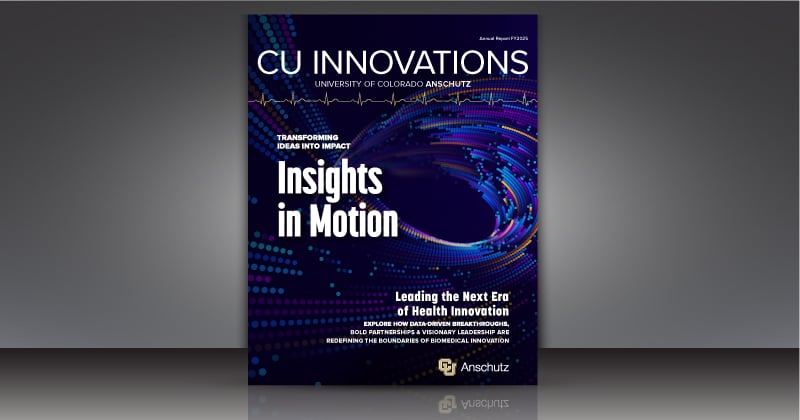Who will most benefit from this OTC status?
People who are uninsured, definitely. People who are young and concerned about confidentiality – this means they don’t have to go to a healthcare provider. And people where their access to healthcare is just limited in general: rural residents, people with really busy schedules, people who may not have access to the healthcare system because of citizen status or other reasons.
When it comes to acquiring and using contraceptive pills, what are the biggest barriers?
One of the biggest things that we see is that people run out of pills and can’t get them in time to stay on schedule. With the prescription pills, you have to contact a healthcare provider, whether that’s in person or via telehealth, sometimes every month or three months, depending on your supply.
If you can’t get the prescription refilled, if you can’t make it to the pharmacy, if the pharmacy is out of stock or closed – because a lot of pharmacies have more limited hours than the stores that they are in – then you can’t get your pills. And if you have a gap of a day or two or longer, then your ability to become pregnant comes back pretty quickly.
In Colorado and in some other states, pharmacists themselves are also able to prescribe or provide contraception, but it still requires interaction with the healthcare system. The cost of seeing a healthcare provider can be another barrier.
Does this pill have any potential severe side effects, such as the blood-clot issues that come with estrogen-containing birth-control pills?
Even though this is safer for a larger population of women because there’s no estrogen in it and it is available without a prescription, we do recommend that people speak with a healthcare provider if they have other health issues. There are a few medical conditions where, while this isn’t completely unsafe, it may be a little riskier. What we know is that progestin and any hormone carries a very small risk of increasing clots.
What I would say is the risk of blood clots with progestin is much lower than with any kind of estrogen-containing method, and it’s also lower than the risk of someone developing a dangerous blood clot during pregnancy. It is all about balancing those risks.
What percentage of pregnancies are unintended?
We know that between a third and a half of pregnancies are unintended – that is either they happened when someone did not want to be pregnant at all, or sooner than they had planned. For someone who is regularly having sex with the possibility of pregnancy, average pregnancy rates in a year are up to 85%. And for someone on birth control, whether that’s condoms, pills or something else, that risk drops down to about 10% if they are using it consistently and correctly.
What effects beyond preventing pregnancy can contraceptive access have on women’s lives?
For people who have very heavy or very painful periods, being on birth control can actually make that better, because it thins out the lining of the uterus so it can make periods lighter. It also can counteract a little bit the hormones that cause the cramps and the pain.
Also, people choose to be on birth control because pregnancy would have such an impact on their lives, and being able to decide if and when they want to have children is a huge point for a lot of people. It means that they can finish their education. It means that they can be comfortable in their job. It means that they can be comfortable in their relationship. Not everyone is with someone that they want to have children with. And just that knowing that you are in control of your own reproductive health is just huge.
Who should not take this pill and why?
There are a few types of hormonally responsive cancers with which we would say people probably shouldn’t take it. People who are not great at taking pills regularly are at higher risk of failure, and so it really is important to make sure that it’s something that fits in with their lifestyle. It also offers no protection against sexually transmitted diseases.
Are there any drug interactions?
We have some concerns with some uncommon drugs across all birth controls. There are some older HIV medications, mood-stabilizing drugs, anti-seizure medications and anti-tuberculosis medications. And so we always encourage anybody who is on a prescription medication to tell their healthcare provider if they are starting or stopping a new kind of birth control.
What can you tell us about cost, insurance coverage and lower-income assistance?
The insurance question is a big one. A lot of insurance programs are not obligated to cover over-the-counter medications, and most don’t. We saw that when acid reflux medications went over the counter. So cost is a concern.
But again, compared to an out-of-pocket healthcare visit for someone who has no insurance, or as a short-term answer when people are switching jobs or insurances, this can be really cost-effective in that period of time.
The company that is making the new pill has said it will have an assistance program available. And, of course, there are resources for people without insurance to get any type of birth control. A lot of public health departments and some low-income clinics offer a wider range of options at lower cost for people.
Some reproductive health experts applaud the timing of this move, given the 2022 Dobbs decision ending the constitutional right to abortion. Can you talk about that?
What we are seeing is that the more restrictions placed on reproductive healthcare, the more people are afraid to interact with the healthcare system. And so having an option available that means that you don’t have to go to a hospital, you don’t have to see a doctor, that you can do this on your own terms at your own time is empowering. And people are more afraid of the consequences of a pregnancy than they have been in the past, and so making sure options are available is even more important.
Reproductive Health Medications: A Pill Primer

Reproductive healthcare providers see a lot of confusion around the different types of pills available today. Here are the basics:
Birth control
Pills taken regularly and used to prevent pregnancy. They contain hormones that block the release of eggs from the ovaries. Most birth control pills include both estrogen and progestin. Also called oral contraceptive pills, they are 91%-98% effective when used correctly.
Emergency contraception
Pills taken after unprotected sex (including if a birth control pill regimen is disrupted) to prevent a pregnancy. Also called morning-after pills, the pills use progestin to stop the ovaries from releasing an egg. They are not to be used as a birth control method, only as emergency contraception. When taken within 72 hours (three days) after unprotected sex, they are 85%-90% effective. Most brands and generic pills are available without a prescription.
Misoprostol and mifepristone
Pills that induce abortion in early pregnancy (under 12 weeks). Called a medication abortion, the pill regimen can include just misoprostol or misoprostol with mifepristone. Depending on the type of pill and the length of pregnancy (the earlier, the more effective), the pills are 85%-98% effective, with failure requiring a clinical abortion. The pill is prescription only and provided with the guidance of a medical professional.
|






